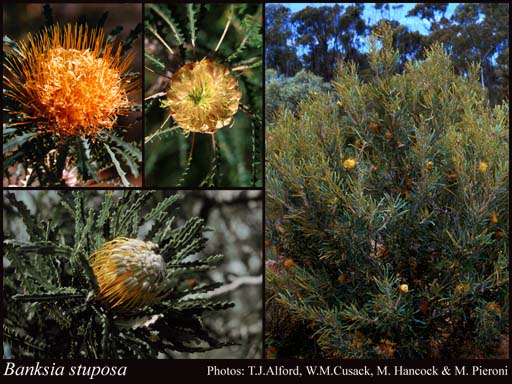- Reference
- Austral.Syst.Bot. 20:70 (2007)
- Conservation Code
- Not threatened
- Naturalised Status
- Native to Western Australia
- Name Status
- Current
Erect, open, non-lignotuberous shrub, 1.5-3 m high. Fl. yellow-orange, Jan or May to Jul or Dec. Gravelly clayey soils over laterite. Lateritic ridges.

Scientific Description
Shrubs, 2-4 m high; branchlets hairy. Leaves petiolate, alternate, 50-120 mm long, 7-15 mm wide, hairy; petiole 3-8 mm long; lamina flat, once divided, pinnately divided, deeply divided, with 13-20 lobes on each side, the margins flat or recurved. Inflorescences hirsute (with long, rough and coarse hairs), yellow; innermost bracts 15-18 mm long, hairy. Perianth 32-35 mm long, hairy, all over, limb apex hirsute (with long, rough and coarse hairs), without awns; pistil 40-50 mm long, curved, style glabrous. Follicles hairy, villous (with soft, shaggy, weak and straight hairs), obovate, 9-11 mm long. Flowers in January, February or March. Occurs in the South-west (SW) Botanical Province(s), in the Avon Wheatbelt (AW) or Jarrah Forest (JF) IBRA subregion(s).
Distribution
- IBRA Regions
- Avon Wheatbelt, Jarrah Forest.
- IBRA Subregions
- Katanning, Northern Jarrah Forest, Southern Jarrah Forest.
- Local Government Areas (LGAs)
- Beverley, Brookton, Broomehill-Tambellup, Cuballing, Katanning, Northam, Pingelly, West Arthur, Williams, Woodanilling, York.